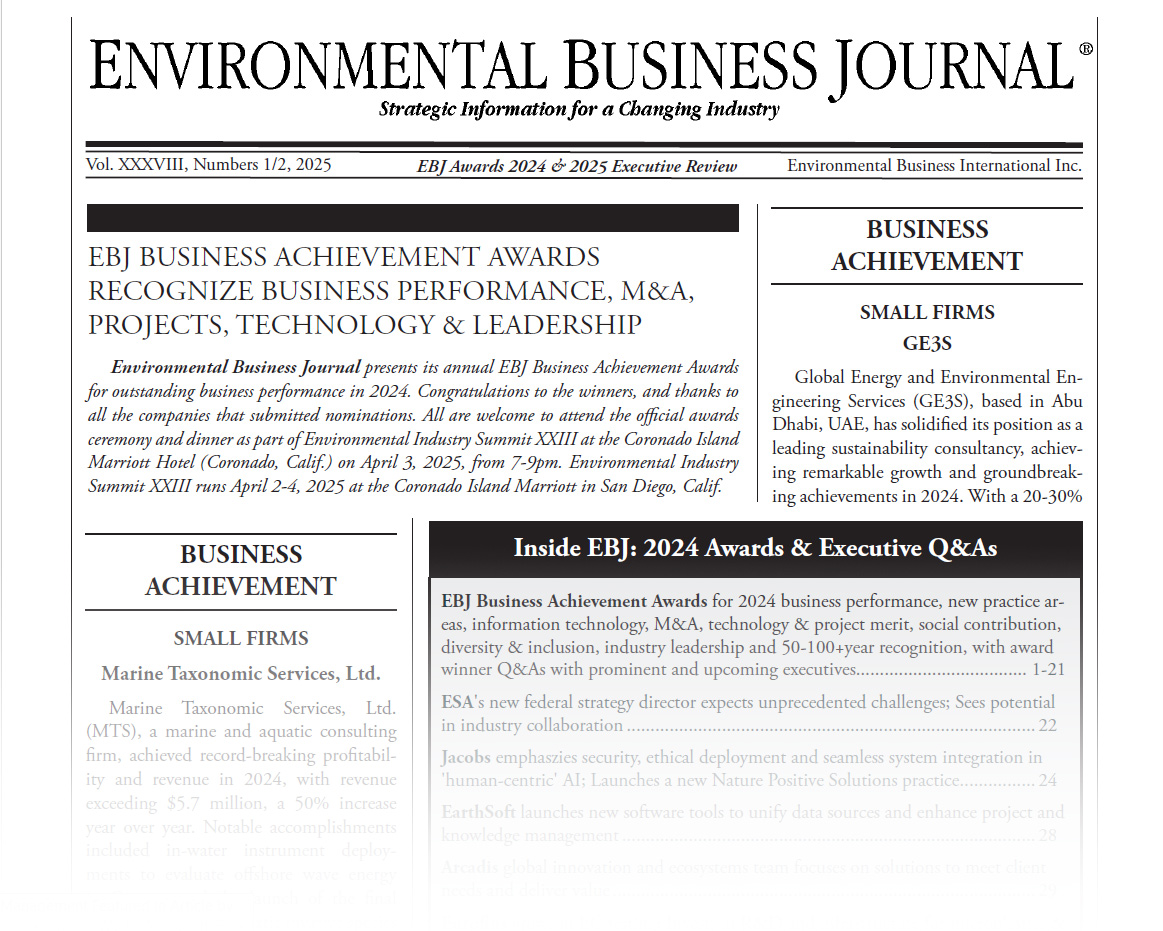Recognized for a massive EHS software rollout for a global energy leader and for its development of three innovative applications to tackle sustainability challenges.
MOUNTAIN VIEW, Calif., February 10, 2025 —Locus Technologies, the sustainability and Environmental Health and Safety (EHS) compliance software leader, was honored by the Environmental Business Journal® (EBJ) with two prestigious 2024 Business Achievement Awards: the Project Merit award for Locus’s successful implementation of a global waste management solution for one of the world’s largest energy leaders, and the Technology Merit award for Locus’s release of step-change software products for produced water management in the oil and gas industry, high Global Warming Potential (GWP) refrigerant management, and sustainable construction. Full details of these achievements and Locus’s recent worldwide project implementations are available from www.locustec.com. EBJ is an independent business research publication that has provided strategic market intelligence to the environmental industry since 1988.
“We are honored to be recognized by an esteemed group of researchers and analysts for the work we are doing to raise the bar in the ESG and EHS software space,” said Neno Duplan, founder and CEO of Locus Technologies. “Our product and implementation teams are masters at developing purpose-built solutions with time-saving frameworks and unmatched configurability. As a result, our clients gain incredible economies while remaining responsive to the emerging demands of the Corporate Sustainability Reporting Directive (CSRD) and the shifting regulatory pressures state-side. We are pleased to be acknowledged for these advancements.”
Environmental Business Journal® provides strategic market intelligence to executives and investors in 13 business segments of the environmental industry including environmental consulting & engineering, remediation & industrial services, water & wastewater equipment, air quality & pollution control equipment, hazardous waste management, resource recovery, solid waste management, water/wastewater infrastructure, renewable energy and environmental instrumentation & information systems.
“In another year of strong growth for the environmental industry in 2024, a number of companies set themselves apart with their growth, innovation, M&A, or signature projects that merit the special recognition of an EBJ award,” said Grant Ferrier, editor of Environmental Business Journal and chair of the EBJ Business Achievement Award selection committee. The 2024 EBJ awards will be presented live and in-person at the EBJ Business Achievement Awards banquet at Environmental Industry Summit XXIII on April 02-04, 2025, in San Diego, along with CCBJ Business Achievement, Lifetime Achievement and 50-Year Company anniversary awards.
To learn more about Locus Produced Water Management, Locus Refrigerant Management, and Locus Sustainable Construction, please visit www.locustec.com.
About Locus Technologies
Locus Technologies, the global environmental, social, governance (ESG), sustainability, and EHS compliance software leader, empowers companies of every size and industry to be credible with ESG reporting. From 1997, Locus pioneered enterprise software-as-a-service (SaaS) for EHS compliance, water management, and ESG credible reporting. Locus apps and software solutions improve business performance by strengthening risk management and EHS for organizations across industries and government agencies. Organizations ranging from medium-sized businesses to Fortune 500 enterprises, such as Sempra, Corteva, Chevron, DuPont, Chemours, San Jose Water Company, The Port Authority of New York and New Jersey, Port of Seattle, and Los Alamos National Laboratory, have selected Locus. Locus is headquartered in Mountain View, California. For further information regarding Locus and its commitment to excellence in SaaS solutions, please visit www.locustec.com or email info@locustec.com.
About Environmental Business Journal
Environmental Business Journal has been published since 1988 by Environmental Business International Inc., an independent research and publishing company focused on the environmental and climate change industries.


